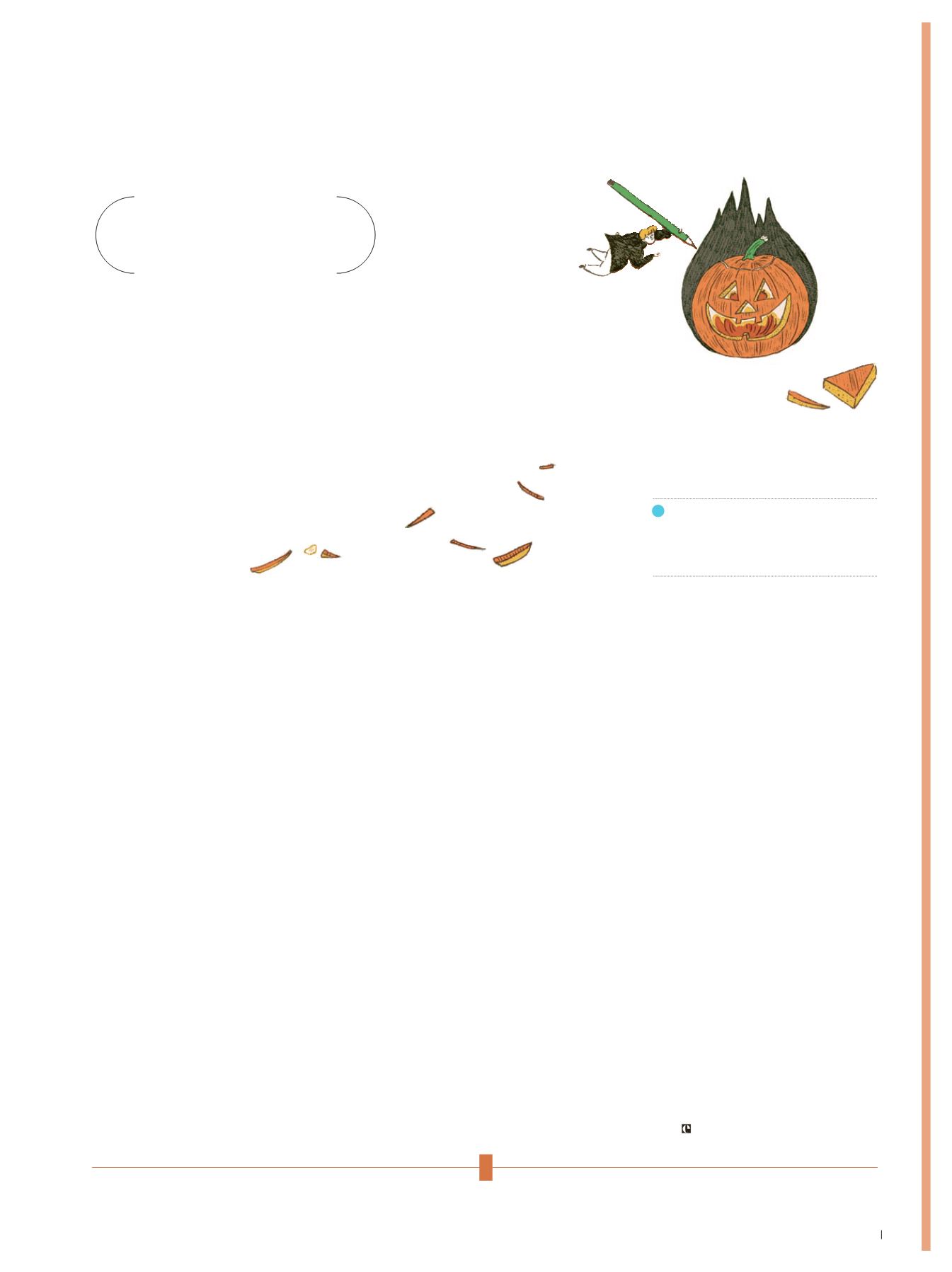
tradition actually came from. With a
little bit of help from the internet, I
found out that the idea is based on an
old folktale from Ireland about a man
named Stingy Jack who wanders around
every October 31 with a lantern he
made out of a large turnip and a burning
piece of coal. To keep him from scaring
the children, the townspeople started
carving scary faces into the fruits they
had on hand, lighting them with candles,
and plopping them outside on their
porches. Though turnips and potatoes
served as early prototypes, once Irish
immigrants brought the tradition to the
US and discovered that the pumpkin
made a much easier canvas, they
switched fruits — and an American
Halloween tradition was born.
I knew none of this growing up, and you
know what? I think my reason for carving
pumpkins — to carry on my dad’s artistic
mastery, to flex those carving muscles
once a year in commemoration of my
childhood — beats some old legend any
day.
KRISTIN WINET
is an award-winning travel writer, blogger, and
photographer. Her work, featured both online and
in print, covers culture, cuisine, accommodation,
and experiential travel. Check her out at
www.
kristinwinet.com
.
i
themed pumpkin family, carving up a
Yoda and a Princess Leia; another year,
he made a
Toy Story
-themed one, a
Buzz Lightyear next to a Woody. With
each year, my sister and I became more
dedicated to the craft too, spending
hours at the local farm picking out
perfectly-shaped pumpkins, watching
carefully as we copied his techniques,
and practicing our drafting skills. It was
serious business.
When I moved across the country for
graduate school, I knew I needed to
keep our tradition alive. I started
holding an annual pumpkin-carving
party for my school friends, inviting
everyone over to participate in a
pumpkin-carving session. We drank hot
apple cider, roasted fresh pumpkin seeds
on the stove, and made pumpkin pie
with the insides once they’d been
scooped out.
A few years ago, my pumpkin-carving
party happened to fall at the same time
my good friend Johanne was visiting the
US. Coming from Switzerland, she was
already familiar with the tradition of
dressing up and going to parties on
Halloween, but she hadn’t grown up
carving pumpkins like me. That night,
we sat down on the floor with black
markers and discussed the process in
full, pausing to really tease out the
importance of starting with a solid face
design. “Some pumpkins require longer,
skinnier faces,” I told her, gesturing at
hers, “and some are better suited to
rounder, fatter faces.” We drew on the
faces, sawed off the tops, and dug in
with our bare hands.
“Yes, but why do you have to carve it?”
Johanne asked, awkwardly holding her
tiny saw in one hand and a goop of
pumpkin guts in another. “Can’t you
just paint on it?”
She had a good point. Why didn’t we?
Somehow, in all my years of primary
school, I’d apparently missed the lesson
where we discussed where this odd
Pumpkins?
ຬ໋ື
ی
͘ዱ
27
enVoyage


